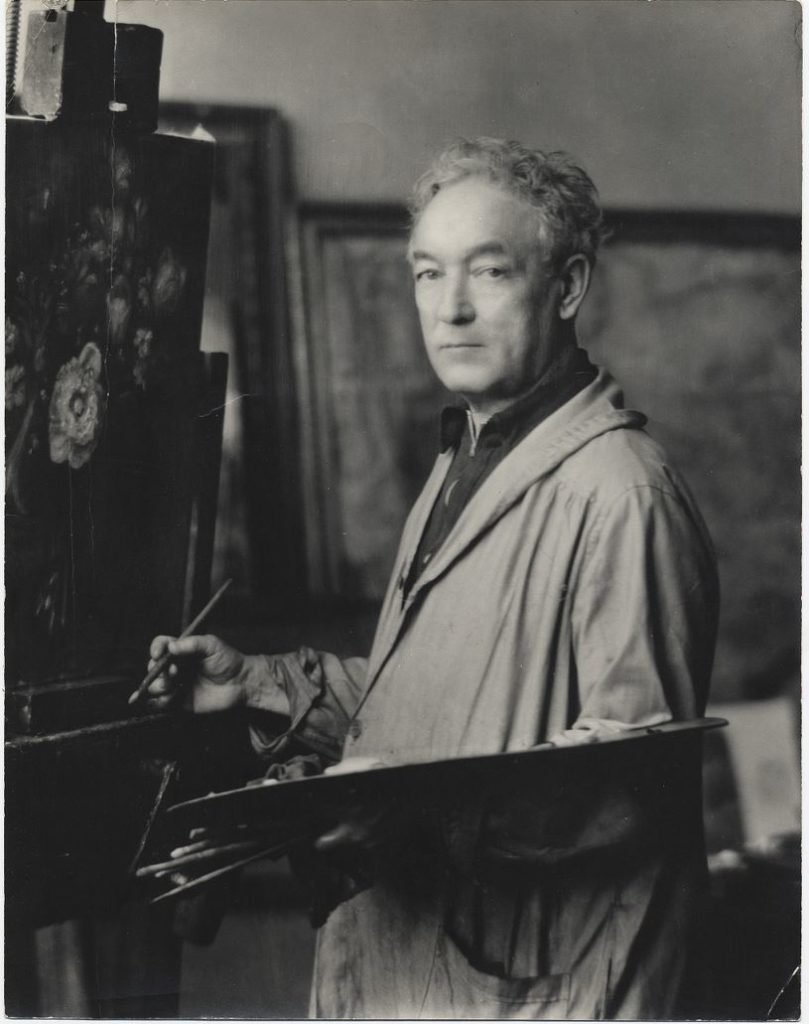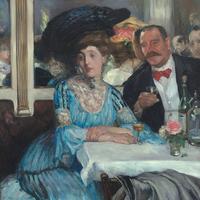More about William James Glackens
Works by William James Glackens

Sr. Contributor
William Glackens was a Philadelphia native who was well-connected even before he began to paint seriously.
As a student, he betrayed an early impulse to create. He was known around his high school for the comics he made alongside his brother Louis. Although Glackens worked for a number of Philadelphia newspapers after graduation, photography was quickly displacing illustration. He almost caught a break in 1898, when McClure’s magazine sent him to Cuba to render riveting scenes from the Spanish-American War. But because the war was so short, only a few of the artist’s images reached publication. During this time, Glackens also took night courses at the Pennsylvania Academy of Fine Art. This was where he developed an art-fueled friendship with Robert Henri, a fellow painter. John Sloan, another Philadelphia native, also ran in this circle, which continued to expand and eventually became the American artist group known as "The Eight."
After experiencing the wild world of European modernism during his first trip to Paris in 1895, Glackens settled in New York. He got jobs as a sketch artist for the New York Herald and the Sunday World, but he also kept painting. Then, the artists known as The Eight joined forces in New York and became known as the Ashcan School, focusing their creative energies on painting scenes of middle class, urban life in the United States. Glackens’ early career sketching for newspapers had prepared him to utilize everyday life as a subject for his art. Some say that modern, American painting began with the Ashcan School. Although artists took cues from French artist Honoré Daumier’s observational style, this era ushered in a total change in subject matter for American art.
Although his early works featured dark tones and gritty, urban scenes, Glackens' style changed over time. After some early trips to France, he became increasingly inspired by the work of Auguste Renoir, and began to paint in the style and colors of the French Impressionist, eventually earning the nickname “the American Renoir.”
Around 1910, Glackens rekindled an old friendship with Dr. Albert C. Barnes, who hired Glackens as his art advisor. With the guidance of a talented and worldly artist such as Glackens, Barnes began to build his now-infamous collection of modern French painting. In 1912, Glackens traveled to Paris on Barnes’s dime, laying the collection’s foundation with pieces by Paul Cézanne, Vincent van Gogh and Pablo Picasso. By 1919, Glackens gave up illustrating in favor of painting. Until his death in 1938, he spent his days traveling, mostly to France, and painting what he saw.
Sources
- Arnason, H.H., and Elizabeth C. Mansfield. History of Modern Art. Upper Saddle River, NJ: Pearson Education, Inc., 2013.
- Artnet. “William Glackens.” Artists. http://www.artnet.com/artists/william-glackens. Accessed 14 December 2020.
- Artsy. “William James Glackens.” Artists. https://www.artsy.net/artist/william-james-glackens. Accessed 14 December 2020.
- Barnes Foundation. “William Glackens.” What’s On. https://www.barnesfoundation.org/whats-on/william-glackens. Accessed 14 December 2020.
- Delaware Art Museum. “William Glackens Illustration Collection.” Helen Farr Sloan Library & Archives. Delaware Art Museum. https://delart.org/wp-content/uploads/2020/06/Glackens-William.pdf. Accessed 14 December 2020.
- Norman Rockwell Museum. “William Glackens.” Artists. Illustration History. https://www.illustrationhistory.org/artists/william-glackens. Accessed 14 December 2020.
- Smithsonian American Art Museum. “William Glackens.” Artist. Smithsonian Institution. https://americanart.si.edu/artist/william-glackens-1824. Accessed 14 December 2020.
- The Metropolitan Museum of Art. “The Green Car.” Collection. https://www.metmuseum.org/art/collection/search/19294. Accessed 14 December 2020.
Featured Content
Here is what Wikipedia says about William Glackens
William James Glackens (March 13, 1870 – May 22, 1938) was an American realist painter and one of the founders of the Ashcan School, which rejected the formal boundaries of artistic beauty laid down by the conservative National Academy of Design. He is also known for his work in helping Albert C. Barnes to acquire the European paintings that form the nucleus of the famed Barnes Foundation in Philadelphia. His dark-hued, vibrantly painted street scenes and depictions of daily life in pre-WW I New York and Paris first established his reputation as a major artist. His later work was brighter in tone and showed the strong influence of Renoir. During much of his career as a painter, Glackens also worked as an illustrator for newspapers and magazines in Philadelphia and New York City.
Check out the full Wikipedia article about William Glackens











